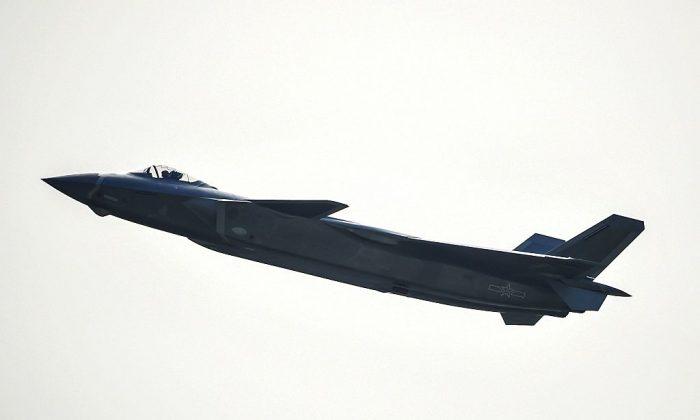Commentary
Russia is not as strong as the United States, except for nuclear weapons.
Russia is not the main threat to the United States—that threat is China.
Back in 1985, during his visit to Paris, Mikhail Gorbachev told French President Francois Mitterrand that the Soviet Union was not strong. In fact, said Gorbachev to his French counterpart, Russia was a banana republic with nuclear weapons.
No doubt this came as something of a surprise to Mitterand. The French had just kicked out more than 100 Soviet spies, mostly for technology espionage. On top of that, France had enlisted the help of a secret agent in Moscow, Vladimir Vetrov (known in security circles as Farewell), who turned over reams of information on the Soviet shopping list for Western, especially American, technology. If Russia needed America’s technology, the clear conclusion was that Russia’s military buildup was vulnerable because the Soviet Union had a weak, low-tech industrial base.
The American response, already underway, was to tighten the screws even more on Soviet industrial espionage. That allowed the United States to exploit its qualitative edge, essentially a force multiplier, against the mass of armor and guns Russia had assembled.
The only sector where Soviet industry was successful, largely because sufficient investment was made, was rocketry, and especially long-range ballistic missiles with nuclear warheads. In this space, the Russians excelled, and they still are excellent nearly 40 years later.
It is quite telling that Russia, even today, faces severe technology shortcomings in its military. Consider the fact that Russian tanks have been decimated in Ukraine mainly by man-portable anti-tank weapons. Why? Because the Russians have not equipped their tanks with active protection systems. One can only guess why this is so: either the Russian active protection system, called Arena M, actually doesn’t work, or the Russians need to import technology for the system, which means they can’t afford to do so.
One needs to remember it was the Soviet Union that pioneered wire-guided anti-tank weapons. In 1973 Israel’s tanks and armored vehicles were decimated by AT-3 Sagger missiles at the hands of Egyptian soldiers. In the Sinai battle, Israel lost between 50 and 150 tanks (mostly US M-48s, M-60s, British Centurions, and Russian T-55 tanks Israel captured in 1967 and upgraded). In recent years Russia has improved its anti-tank weapons; the newest, the 9K135 Kornet, is a longer range weapon with a tandem warhead. Tandem warheads were designed to defeat modern tanks that are equipped with an applique of reactive armor. A tandem warhead blasts the reactive armor, and the second stage of the warhead penetrates the tank’s armor. We know, from a few examples in Iraq, that the Kornet can destroy America’s best tank, the M1 Abrams.
If Russia was the leading developer of anti-tank wire-guided missiles, using them successfully with their Egyptian and Syrian proxies, and has since developed more advanced versions of these rocket-powered tank killers, it follows that tactically the Russian army should have been prepared to deal with such weapons. Yet clearly, Russia was not ready.
The same holds true for Russia’s aircraft, at least the older models, which have predominated in the Ukraine conflict. These aircraft lack targeting pods and their defense against infrared and radar missiles is badly outdated. That is why Russia’s aircraft losses, especially the Su-25, have been so high in the Ukraine war. It is surprising that Russian systems have not kept pace. The anticipated scenario—knock out your adversaries’ aircraft and air defenses and then use your fighter bombers to attack your enemy’s forces—something Russian military operators surely know, never materialized in Ukraine. The Russians have had some success against Ukraine’s mobile air defenses and against Ukrainian aircraft (all of which are also Russian), but not nearly enough considering Russia’s losses. Again it seems that Russia’s equipment falls short; lack of suitable self-defense systems for Russian aircraft and lack of enough accurate long-range guided weapons to attack enemy forces.
What this means for the United States and its NATO allies is that Russia’s conventional forces are much less fearsome insofar as defeating NATO’s forces than anticipated. It does not mean that, should the war expand beyond Ukraine, that Russia is helpless against NATO or will lose a war. Russia may not be able to win, in the conventional sense of the term, but it is quite capable of inflicting very heavy damage on European cities. Unlike mobile military operations, cities, depots, rail lines, communications hubs, and airports are sitting ducks. The destruction in Ukraine is grim testimony to the devastation Russia can cause.
The U.S. Secretary of Defense, Lloyd Austin, says that the U.S. and NATO goal is to weaken Russia. But the weakening he is promoting in the Ukraine war will not touch Russia’s long-range missile capability, nor will it change at all Russian nuclear capabilities. Worse still, if Russian forces will “lose” in the conventional sense of the term, the introduction of unconventional weapons can’t be ruled out. In fact, U.S. intelligence has been telling the White House about this danger, but neither the White House nor the Pentagon is listening or, for that matter, wants to listen.
Worst of all is that a war in Europe is in no one’s interest, especially NATO. NATO may fight, but if the end result is massive destruction, NATO will lose its credibility because it can’t defend Europe’s civilian population or save Europe’s industrial infrastructure. All of this is another way of saying that NATO’s strength is deterrence, not war.
One of the completely strange attitudes in the U.S. administration has been to fob off negotiations with Russia and seek to cut Russia off diplomatically and politically, even though neither the United States nor NATO are parties in the Ukraine conflict. But that veil is beginning to disintegrate in Russia’s eyes and even among the NATO members. Thus Washington and its European allies are about to cross a Rubicon to face an expanded war and considerable devastation.
NATO is an alliance to protect NATO members from attack; it was never conceived to protect others from attack. Its expansion into Ukraine, a non-member, is innovative and highly risky. Beyond Europe, NATO plays no role in Asia. Here the United States is the main guarantor of regional stability, but the U.S. role is now challenged by China, a country that appears more technologically advanced than Russia. Unlike Russia, China has a significant high-tech industrial infrastructure, put there initially by the United States, Japan, Korea and even Taiwan. Thus, unlike Russia, which lacks the technology and probably does not have investment dollars, China has both, and China is increasingly aggressive and expansionist.
If U.S. policy was sensible, it would seek a diplomatic resolution of the crisis in Ukraine and with Russia and find ways, as the Russians asked even before the Russian army invaded Ukraine, for a solution to at least part of the Ukraine problem (eastern Ukraine’s Donbas area), and for new security measures (surely including nuclear forces) in eastern Europe.
The fact that Washington is incorrigibly after some sort of victory against Russia can well turn out to be a pyrrhic victory, at best.
Views expressed in this article are opinions of the author and do not necessarily reflect the views of The Epoch Times.





